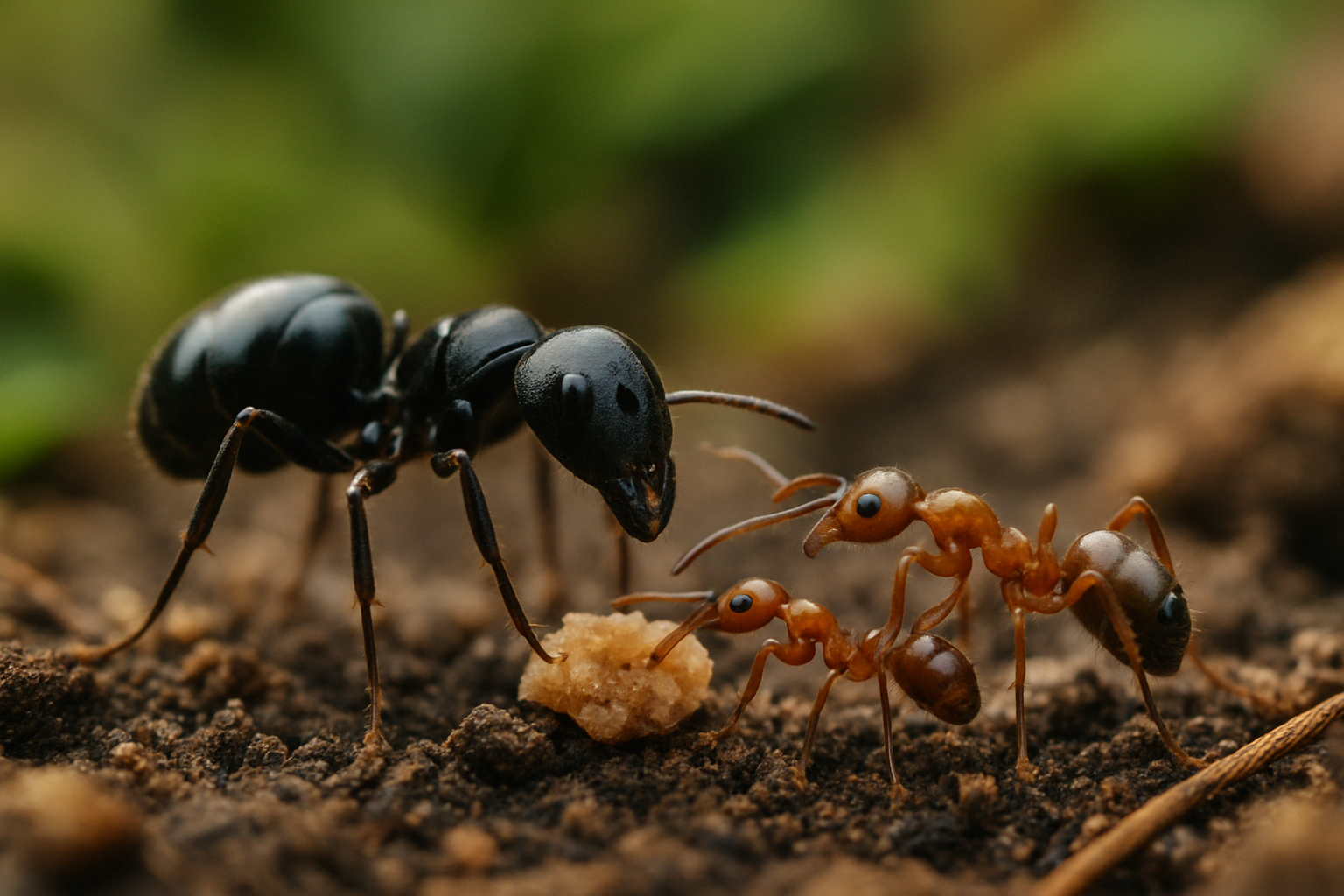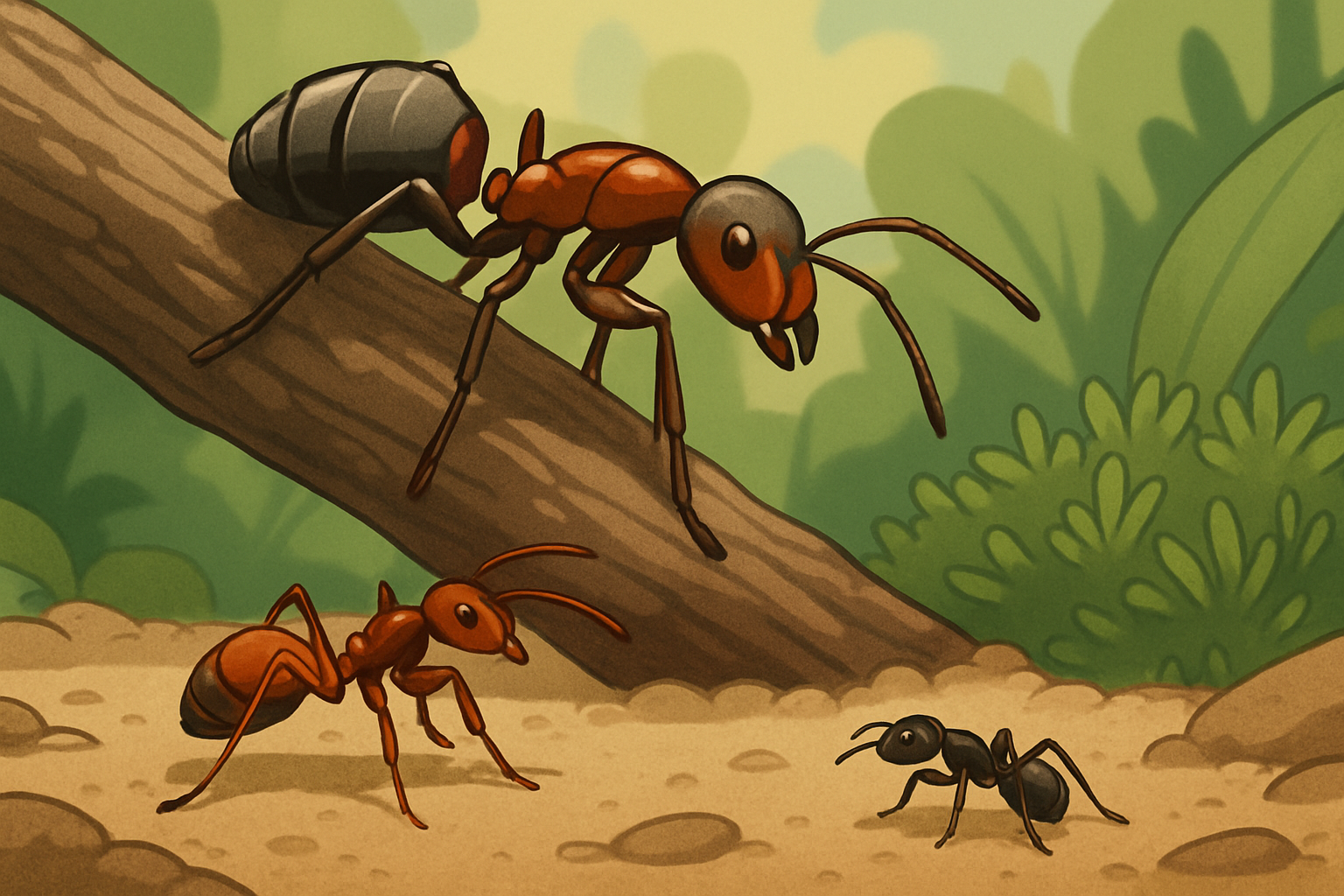Home Value Impact - Should You Paint Brick House or Keep Natural
Should you paint your brick house or preserve its natural look? Explore the detailed pros and cons t...

Ants are truly fascinating creatures, admired for their toughness and surprisingly intricate social habits. Many people have probably found themselves wondering just how long an ant can soldier on without food.
To wrap your head around how ants manage without food, it helps to start with their basic biology. These little creatures have a metabolism that’s lightning-fast for their tiny size so they burn through energy quickly. Their minuscule bodies run on sugars and proteins like a machine. They constantly convert whatever they snack on into fuel that keeps them buzzing around and working for the colony while growing stronger. Believe it or not, the size of an ant makes a big difference in how much energy it needs and how well it can tough it out during food scarcity.
Ants don’t all handle starvation the same way. It’s fascinating how their survival skills vary depending on size, habitat and clever evolutionary tricks. Take desert ants for instance. They often pull off impressive feats by stretching out hunger spells and conserving both water and energy like seasoned pros. Meanwhile tropical ants which usually have food coming at them left and right tend to tap out sooner when the snack supply dries up.
| Ant Species | Typical Survival Without Food | Habitat | Size (mm) | Notable Survival Adaptations |
|---|---|---|---|---|
| Red Imported Fire Ant | Roughly 3 to 5 days when food’s scarce | Warm climates | 3 to 6 | Packs away fat reserves and has a heartwarming habit of sharing food within the colony |
| Carpenter Ant | Can hang on for about 7 to 10 days | Forests | 6 to 12 | Bigger body size works like a slow-motion metabolism during tough times |
| Desert Harvester Ant | Usually manages 10 to 14 days without a bite | Arid desert | 6 to 8 | Masters of water conservation, practically sipping every drop |
| Argentine Ant | Typically survives 2 to 4 days when food runs dry | Urban and wild | 2.5 to 4 | Quick on the forage, they’re always racing against hunger |
| Black Garden Ant | Roughly 5 to 7 days without food | Gardens and fields | 3 to 5 | Chills out by reducing activity and shares meals through trophallaxis — a real team player move |
Larger ants like carpenter ants often hold out longer without food because they pack bigger energy reserves and their metabolism slows down when things get tough. Smaller ants by contrast tend to burn through their energy more quickly—kind of like sprinting when you should be pacing yourself.

Various ant species illustrating differences in size and habitat adaptations.
Ants kick their survival instincts into high gear when faced with starvation. They dial down their physical activity to conserve energy and fine-tune their metabolic rates. They also tap into hidden fat and glycogen stashes like tiny efficient hoarders. On top of these physiological adjustments ants pull together socially through behaviors like trophallaxis, which makes sure the VIPs of the colony don’t go hungry.
While ants can tough it out without food for a decent stretch, having access to water truly gives them a leg up when starvation hits. Dehydration is a sneaky stressor that accelerates their energy drain, no joke. These little guys soak up moisture not just from the food they munch on, but also from environmental perks like dew drops or even from water produced during digestion.
Various environmental factors play a big role in how long ants can hold out without food. Temperature has a direct say in their metabolism. Cooler conditions tend to slow things down like hitting the brakes and help ants stretch their survival time without a bite. Warmer temperatures rev up their energy use and make them burn through their reserves faster, cutting down how long they can tough it out. Then humidity affects how well ants keep water in their system and how quickly dehydration becomes a real threat. Seasonal shifts add another twist by causing changes in food availability and shaking up the colony’s usual routines. The quality of their shelter and the size of the colony also play their parts by tweaking energy demands and the social buzz. They influence how well ants can endure those lean times.
If you have ever watched ants in action, you might’ve noticed a level of teamwork that’s downright impressive. These tiny creatures band together in ways that help them get through tough times, especially when grub is running low. Their social structure isn’t just for show—it’s like a well-oiled machine that kicks into high gear when food becomes scarce. Trust me, ants have mastered the art of cooperation, and their survival strategy shows just how powerful sticking together can be.
Ant colonies behave like superorganisms, where every individual chips in to boost the whole group's shot at survival. When food runs low, social behaviors suddenly become the real MVPs. Sharing food through trophallaxis isn’t just polite, it’s a lifeline that gets nutrients to the colony’s VIPs. Each ant usually has its own specialty, which helps them save energy and dodge pointless busywork. Scouts crank up their foraging game, venturing out to sniff out fresh food sources.
There are quite a few myths floating around about ants and how long they can go without a bite to eat. Some individuals believe ants can survive forever without food or even get their nutrients from things like dirt, which just isn’t true. Plus, not all ants cope with starvation in the same way—the time they can hold out really varies a lot.
Understanding how long ants can live without food is important when shaping pest control methods and fine-tuning care routines for ants kept as pets. The length of starvation influences which baits get picked and the timing of their use, not to mention how you plan the whole pest removal process. Plus, it’s important for managing the diet of those little guys in captivity.
24 posts written
As a fan of cultural anthropology, Magnolia uncovers hidden patterns in human societies, translating complex social dynamics into captivating articles for curious minds.
Read Articles
Should you paint your brick house or preserve its natural look? Explore the detailed pros and cons t...

Unlock the secrets of the perfect affogato coffee cup. Explore design, materials, and temperature co...

Explore Tokyo’s diverse neighborhoods through their unique culinary delights. This guide maps out lo...

Explore the best US destinations in May that offer mild weather and fewer tourists, from Asheville's...
10 posts written
9 posts written
9 posts written
